One year of Al-Aqsa Flood: How NYT massacred facts about Israel’s genocide in Gaza
By Maryam Qarehgozlou
For a year, since the Israeli regime launched its genocidal war against Palestinians in Gaza, Western media’s coverage of the war has been widely described as abhorrently unfair and lop-sided.
One of the mainstream media outlets that has received significant flak for not only whitewashing the Tel Aviv regime’s genocidal crimes in the coastal territory but also criminalizing the victims and their legitimate resistance against the occupation is the New York Times.
Media analysts say the US-based newspaper has unapologetically promoted the Israeli narratives of war since October 7 last year through selective language and dissemination of disinformation.
They particularly refer to the amplification of unfounded claims about beheaded babies and allegations of Hamas raping women – claims that were eventually proven to be false and concocted.
By employing vague language and reporting unverified incidents, the Times has deliberately framed events over the past year in a manner that whitewashes and trivializes the regime’s war crimes.
Recently, an internal memo from the paper discouraged the use of terms such as “genocide” when discussing Gaza, reflecting an editorial preference to avoid strong language that could underscore the devastating impact of the ongoing war, which has already claimed more than 41,800.
Analysts suggest that this choice of terminology has sought to sanitize the violent, genocidal nature of the war that completes one year on Monday, diverting attention from civilian massacres, the displacement of 1.9 million Palestinians, and the systematic destruction of critical infrastructure.
NYT’s one year of war coverage in Gaza as well as Lebanon, media analysts note, has utterly failed to uphold journalistic values and principles of objectivity, impartiality and fairness.
‘A distortion of reality’
The NYT’s biased reportage on the genocidal war on Gaza can be first characterized by the use of language that favors Israel and fails to accurately represent the Palestinian perspective.
A simple search on the NYT website and social media pages throws up hundreds of such examples that attest to the fact that the newspaper's coverage of the war, Israeli genocidal crimes and Hamas resistance has been far from desirable.
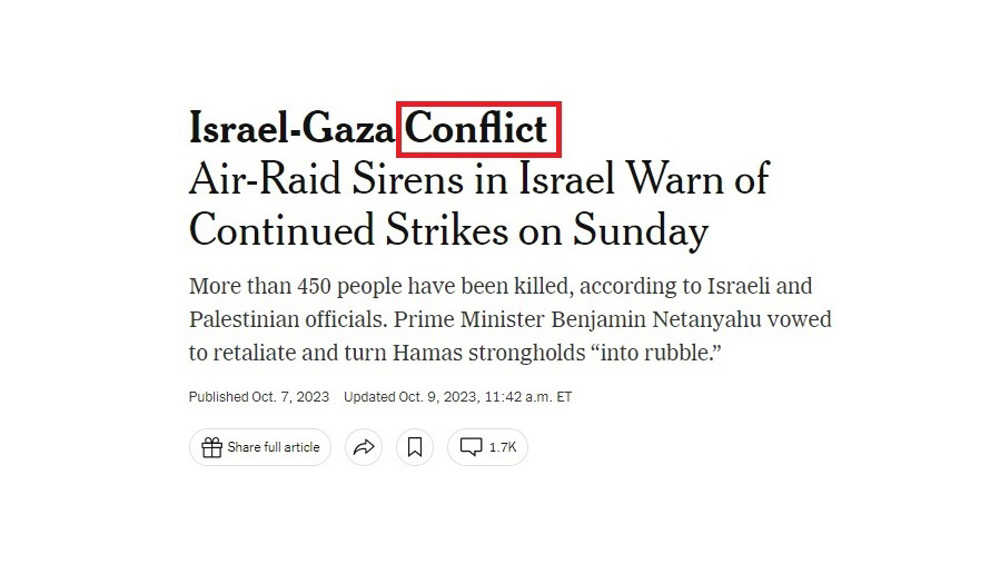
While the catastrophic humanitarian crisis has been unfolding in the besieged territory since the war began in October last year, the NYT has consistently described the dire humanitarian situation in Gaza which has taken a horrific toll on innocent Palestinian lives as a “conflict.”
It has deliberately avoided terms such as "genocide", "war crimes", "massacres" to somehow absolve the Israeli regime of what it has been doing in Gaza, with the support of the United States.
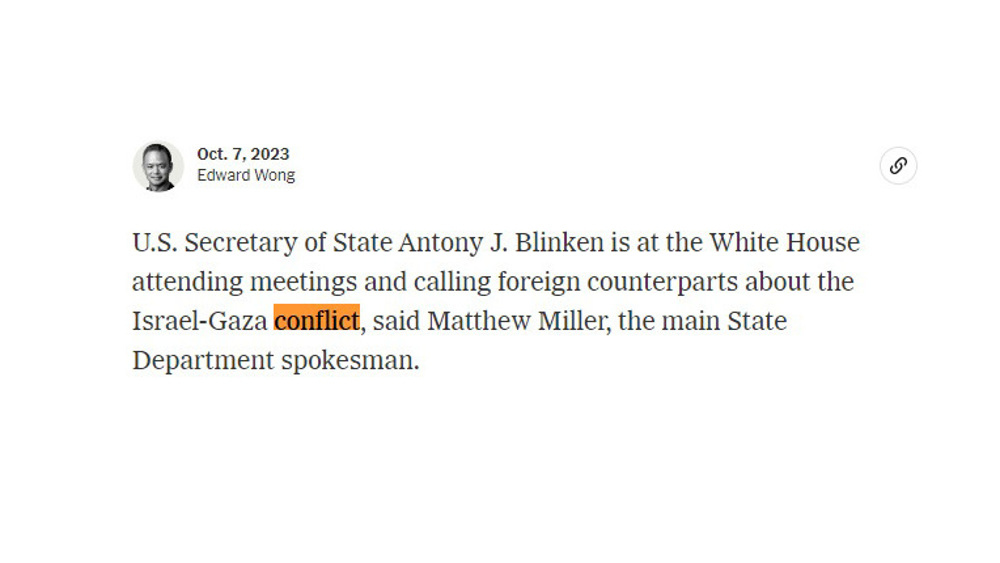
“The word ‘conflict’ represents a deliberate distortion of the reality on the ground, according to experts.
This word choice not only obscures the asymmetry of power between the two sides but also serves to normalize and perpetuate the systemic oppression and violence faced by Palestinians,” Amin Moein, a Ph.D. candidate in Media Studies told the Press TV Website.
Moein explained how the Western media, in this case NYT, has pushed Israeli narratives by using a particular set of words while avoiding the real terminology that best describes the genocide.
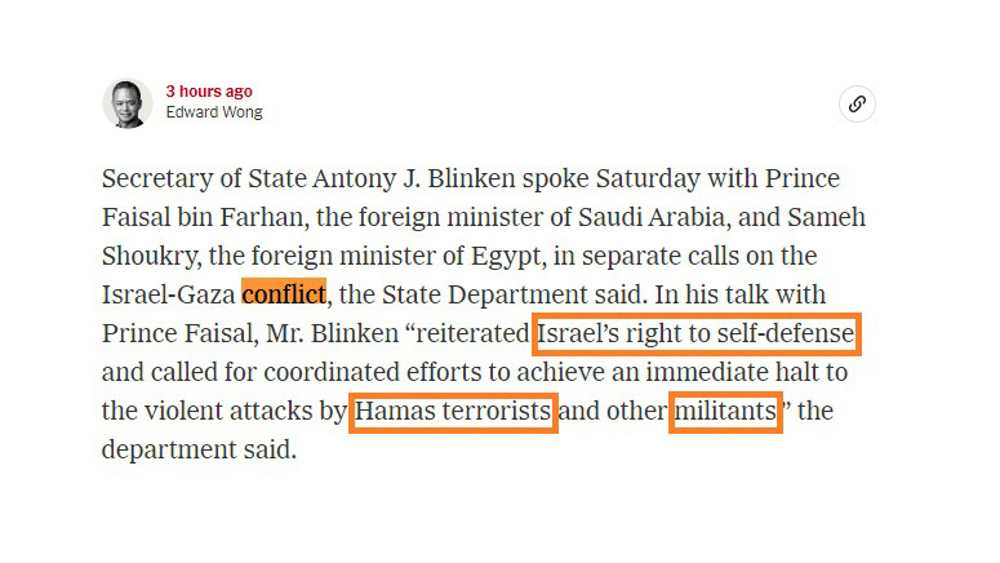
These media outlets have routinely used ambiguous terms such as “militants” or “terrorists” when referring to Palestinian (Hamas and Islamic Jihad) resistance fighters.
Labeling resistance fighters as “militants” or “terrorists,” Moein told the Press TV website, serves to delegitimize and demonize Palestinian resistance against the Israeli oppression and occupation.
“This language choice overlooks the context of Palestinian resistance as a reaction to ongoing oppression and dispossession and ignores the fact that resistance is a fundamental right under international law in the face of an ongoing occupation,” he stressed
Ignoring Palestinians’ trauma
A short article by NYT correspondent, Isabel Kershner a British-born Israeli journalist based in al-Quds, on the very first day of the war, provides a glaring example of the newspaper's one-sided reporting.
The story titled “Hamas Attack Has Haunting Echoes of the 1973 Yom Kippur War” predominantly focused on "Israeli trauma" following Hamas-led Operation al-Aqsa Flood (Storm) while largely disregarding the historical context and ongoing suffering of Palestinians over the past seven decades of Israel’s occupation of their lands.
The operation on October 7 last year didn't come in a vacuum. It was the result of years of the Israeli regime's atrocities against Palestinians and illegal occupation of their homes, lands and orchards.
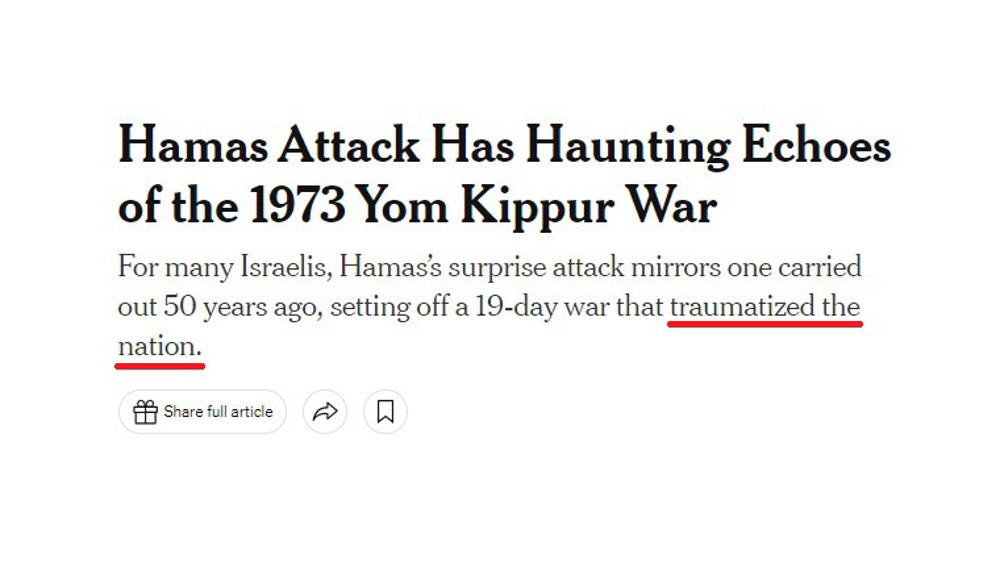
“The story failed to address the fact that Palestinians have endured decades of dispossession, violence, and forced displacement," Moein stated, referring to the lop-sidedness of the story.
"This prolonged history of suffering has undoubtedly resulted in significant trauma for the Palestinian people, which is not acknowledged in the article."
The NYT’s approach, according to the media analyst, downplays Palestinian suffering under decades of occupation and reinforces harmful misconceptions about the nature of the Al-Aqsa Flood Operation, which ultimately benefits the regime and serves its interests.
Only Israelis are ‘slaughtered’
The newspaper has also shown a tendency to use strong, emotional language when describing Israeli settlers while adopting a passive voice for Palestinian civilian casualties.
Pertinently, 69 percent of Palestinian victims since Oct. 7, 2023 have been children and women.
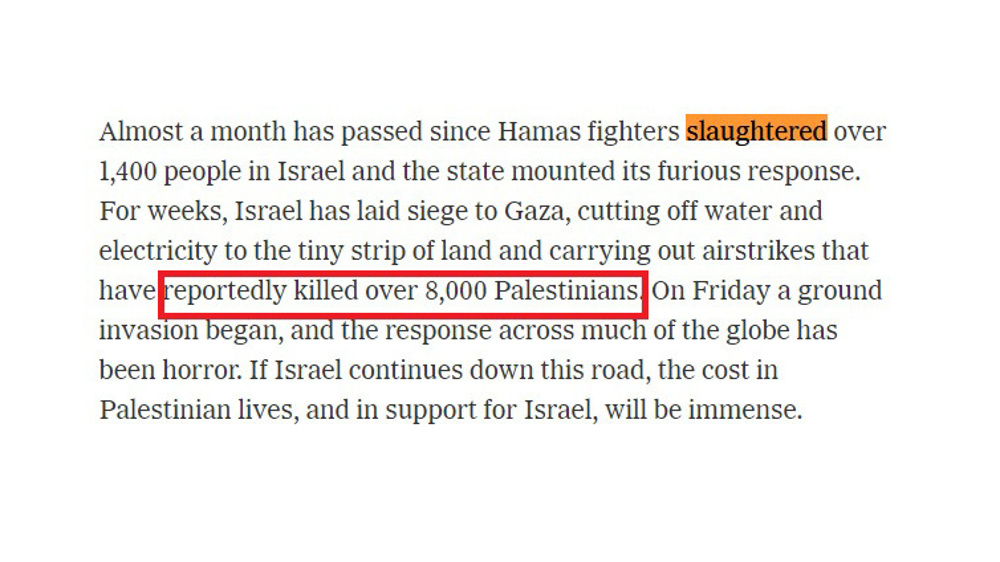
The NYT reports have used emotive terms like “slaughter,” “massacre,” and “horrific” almost exclusively for Israeli settlers while using passive language like “killed” or “died” for Palestinian casualties, more than two-thirds of them women and children.
“It reflects an imbalance in the representation of the two sides and serves as evidence of the NYT’s subservience to the Israeli regime’s propaganda machine,” Moein stated.
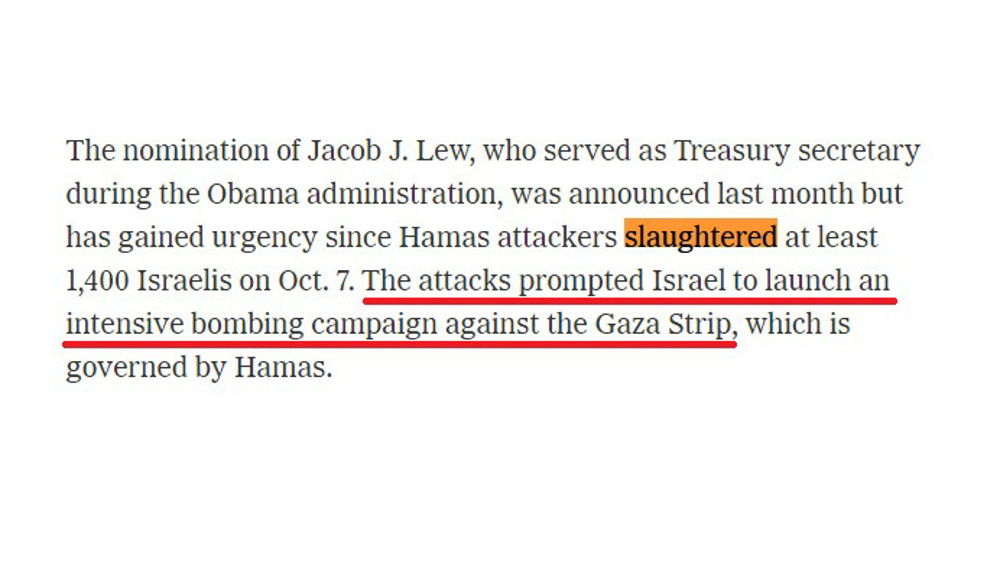
An analysis by the US-based website Intercept, published in January, revealed a significant disparity in the NYT’s use of emotive terms to describe Israeli and Palestinian deaths.
As of November 24, the newspaper had referred to Israeli fatalities as a “massacre” 53 times, while only using the term once to describe the killing of Palestinians.
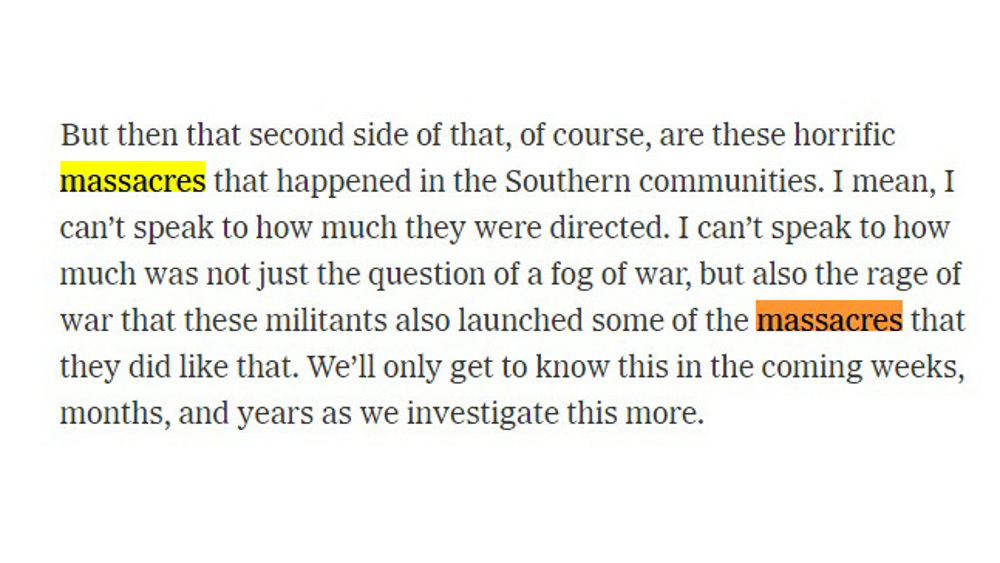
Similarly, the ratio of using “slaughter” to describe Israeli settlers versus Palestinian casualties stood at 22 to 1, despite the estimated Palestinian death toll reaching approximately 15,000 at the time.
The analysis also indicated that references to “Israeli” or “Israel” were found to be more frequent than “Palestinian” or related terms, despite the significantly higher number of Palestinian casualties.
Notably, Palestinians were mentioned only once for every two Palestinian deaths, while Israeli settlers were mentioned eight times for each Israeli death – a rate that is 16 times higher per death compared to mentions of Palestinians.
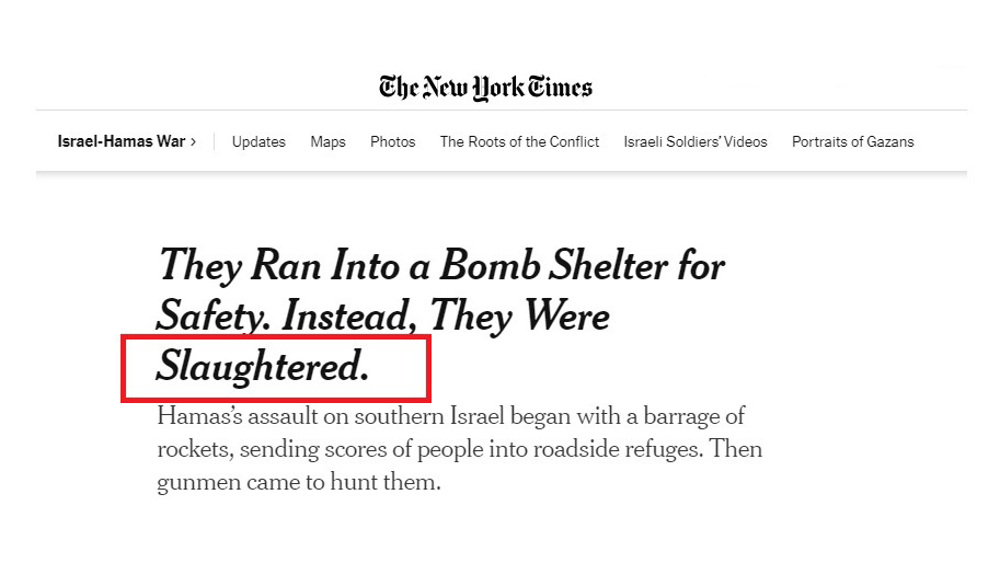
A memo in November — written by Times standards editor Susan Wessling, international editor Philip Pan, and their deputies, instructed the NYT’s journalists to limit the use of terms such as “genocide” and “ethnic cleansing,” and to avoid referring to Palestinian land as “occupied territory.”
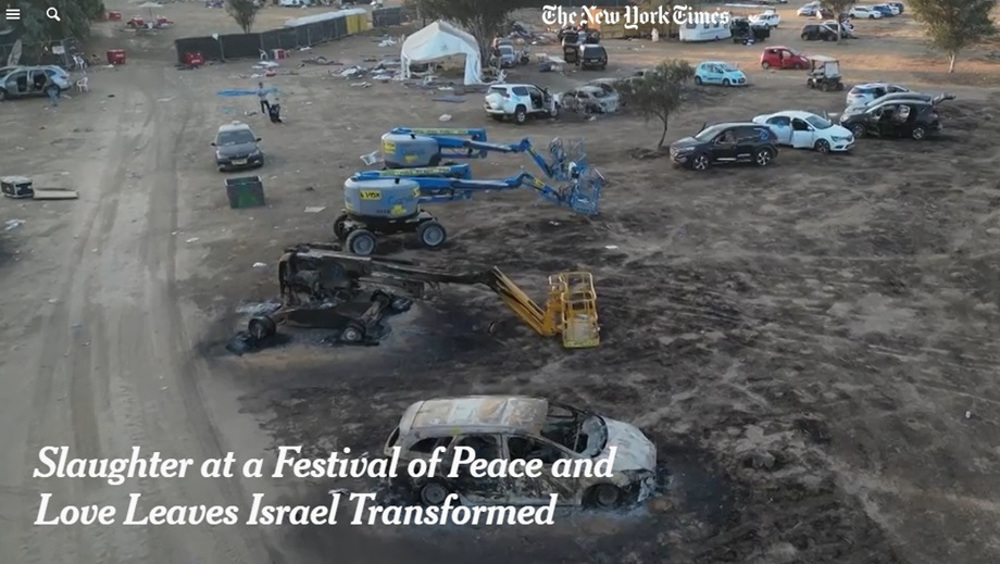
“Words like ‘slaughter,’ ‘massacre’ and ‘carnage’ often convey more emotion than information. Think hard before using them in our own voice,” according to the memo.
“Can we articulate why we are applying those words to one particular situation and not another? As always, we should focus on clarity and precision — describe what happened rather than using a label.”
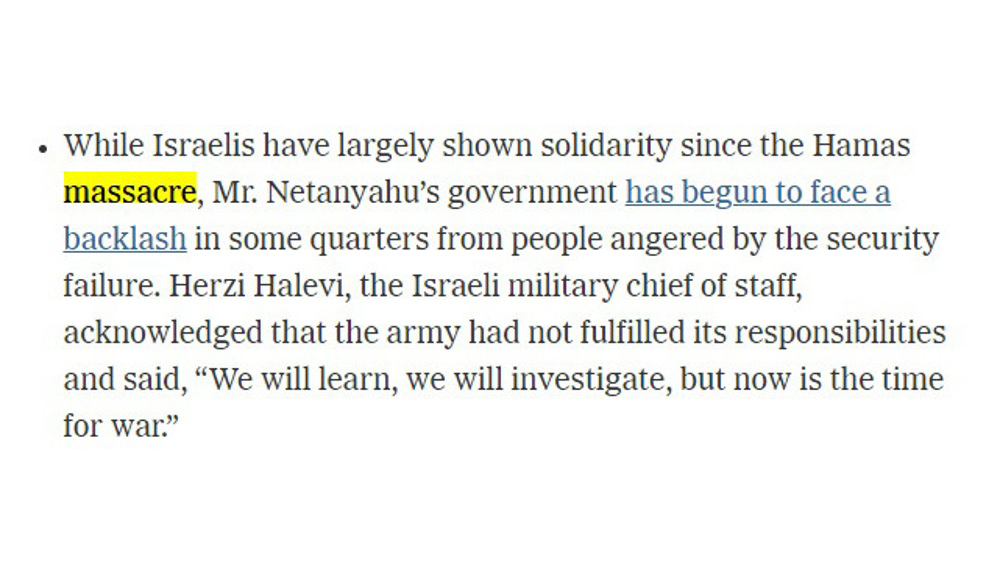
“The NYT deliberately shapes readers’ perceptions and emotional responses with its reportage. This bias in language use serves to humanize Israeli settlers while dehumanizing or minimizing the suffering of Palestinians,” said Moein.
“It is explicitly implying that Palestinians deaths are somehow less significant or less worthy of emotional attention,” he added.
Skewed narrative
In late March, the NYT published an opinion by columnist David Brooks whose son used to serve in the Israeli military, as admitted by Brooks himself.
The title of the article “What Would You Have Israel Do to Defend Itself?” was clearly one-sided and an example of the newspaper's skewed editorial policy that favors the child-murdering regime.
In the lead paragraph, the writer made it clear that “Israel has the right to defend itself” and is only looking for “alternate strategies” to decrease civilian casualties without making any mention of the number of Palestinian women and children killed in Israel’s deliberate targeting of residential areas.
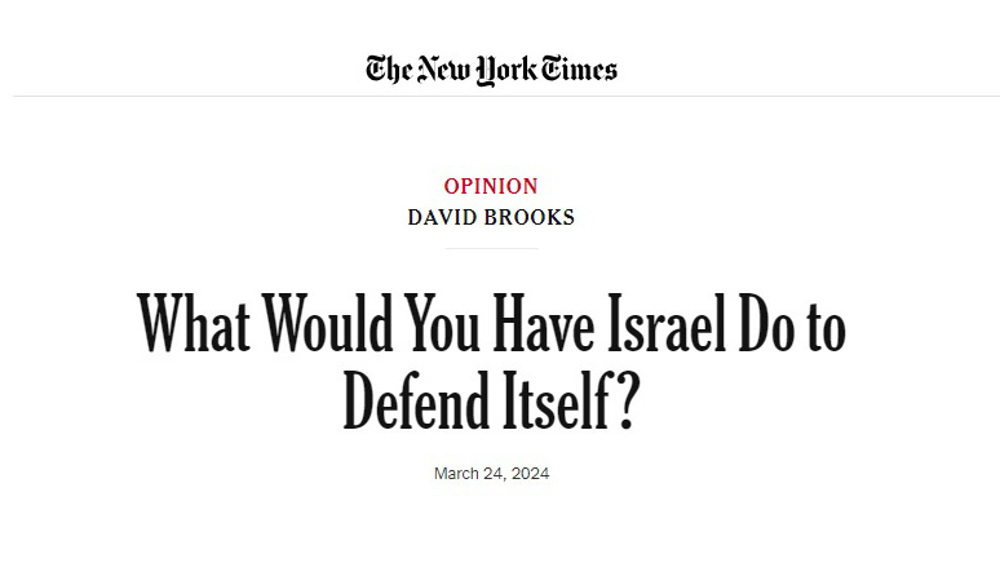
Brooks’ primary concern was not about the devastating impact of the Zionist regime’s unspeakable atrocities and war crimes on civilians, but rather about the potential consequences these actions may have on the Tel Aviv regime’s relationships with its close allies and friends.
His apprehension seemed to stem from the possibility that the regime could become more isolated due to its genocidal practices, suggesting a preoccupation with political expediency rather than genuine empathy for the civilian victims of Israel’s genocidal practices in Gaza.
In one paragraph, Brooks quoted John Spencer, the chair of urban warfare studies at the Modern War Institute at West Point, claiming Israel has done more to protect civilians compared to the United States’ actions in Afghanistan and Iraq.
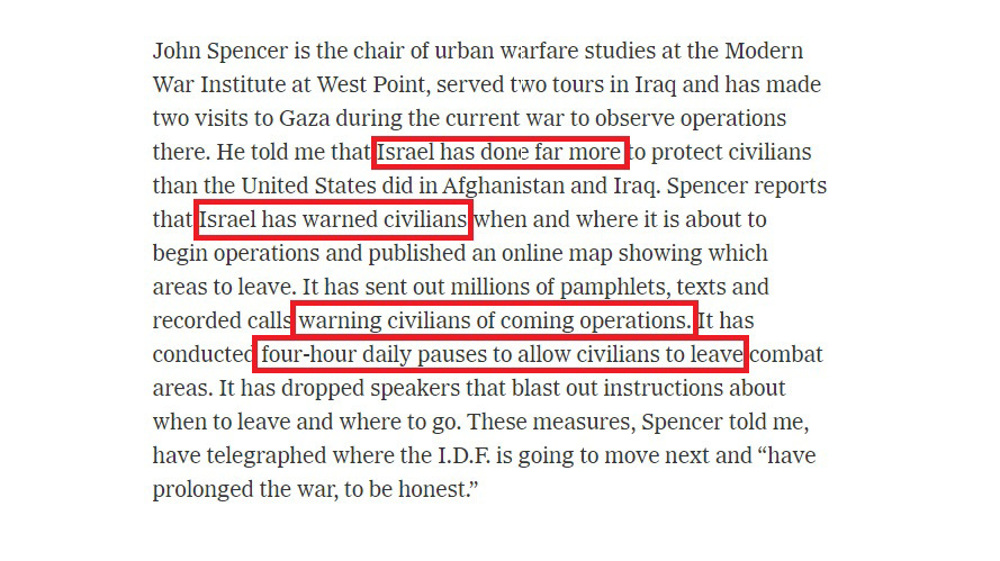
“The so-called “protective measures” mentioned in the paragraph have served as a mere smokescreen for the Zionist regime’s ongoing violations of international humanitarian law and human rights,” veteran journalist Ati Mirghara told Press TV Website.
“Spencer’s claims are nothing more than a collection of lies and distortions that serve to whitewash Israel’s crimes against the Palestinian people,” she added.
Predictably, in the end, the writer acknowledged the lack of viable alternatives for the Israeli regime and endorsed Israel’s current military approach to “eliminating Hamas,” effectively supporting continued violence and suffering for the Palestinian people.
Simultaneously, the writer justified civilian deaths by placing blame on Hamas and repeating the baseless claims that the resistance group is using “human shields,” while absolving Israel of responsibility for its disproportionate use of force against Gaza’s 2.3 million population.
“This narrative serves to perpetuate a skewed portrayal of the genocidal war in Gaza, prioritizing Israel’s geopolitical interests while demonizing Palestinian resistance," Mirghara remarked.
This biased perspective disregards the broader context of occupation, oppression, and historical injustice faced by Palestinians."
‘A dangerous tool for Israeli propaganda’
Another story carried by NYT in mid-July titled “How Hamas Is Fighting in Gaza: Tunnels, Traps and Ambushes” reported on Israel’s relentless repetition of unsubstantiated claims regarding Hamas’ use of civilian infrastructure and disguises to justify their own war crimes, deflecting blame onto the Palestinian resistance movement.
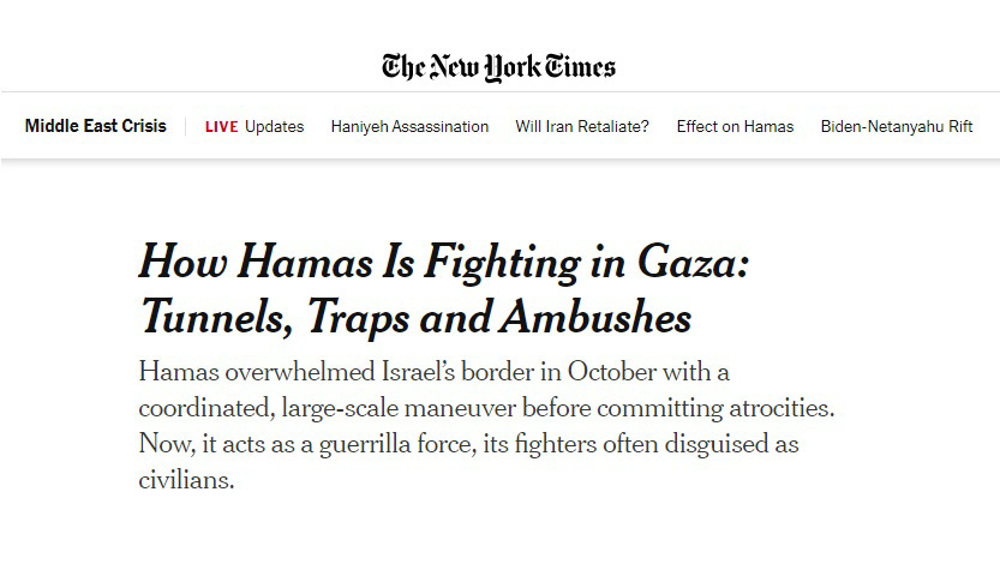
“Western media’s uncritical acceptance and amplification of these unproven assertions serve as a dangerous tool for Israeli propaganda,” Mirghara said.
She explained that Israel’s lack of concrete evidence only underscores the need for the media to question its motives, demand transparency, and hold the regime accountable for its actions, rather than blindly accepting their self-serving claims and parroting these lies.
‘A misleading picture’
Another NYT story published on June 23, with the headline “Blaming Hamas for Gazans’ Suffering, Many Israelis Feel Little Sympathy,” placed disproportionate emphasis on Israeli sentiments while diminishing the experiences of Palestinians.
The story implicitly suggested that Palestinian suffering is self-inflicted because of their support for Hamas, a legitimate government Palestinians elected in a 2006 election, and downplayed the devastating impact of the Israeli military’s relentless bombardment of Gaza.
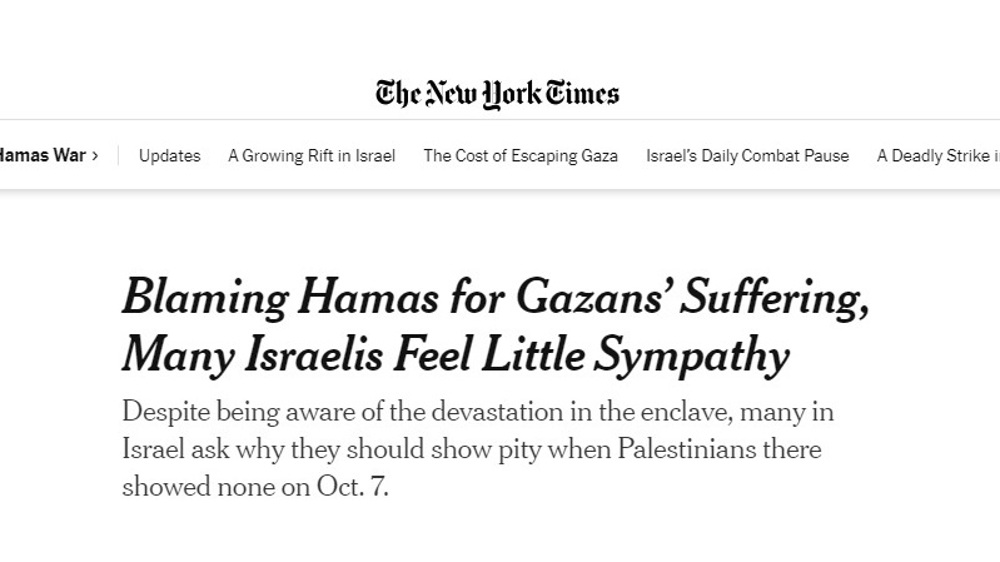
“Indeed, the story’s narrow focus on the events of October 7 failed to acknowledge the broader historical context and the chain of events that led to that point," said Moein.
"By ignoring the precedents and antecedents, the narrative presents an incomplete and misleading picture of the situation."
He said NYT is conveniently refusing to admit that the events of October 7 did not occur in a vacuum.
“Such framing again serves to legitimize Israel’s disproportionate use of force and absolve it of any responsibility for the ongoing suffering of the Palestinian people,” Moein warned.
‘Nameless, faceless Palestinians’
The NYT’s coverage of Israel’s genocidal war on Gaza, like other mainstream media outlets, has also been marked by an unbalanced focus on Israeli and Palestinian "victims."
While the illegal Israeli settlers have been humanized through detailed profiles and extensive coverage, the hundreds of thousands of Palestinians who have been killed or displaced in the Israeli onslaught have been reduced to mere statistics.
On September 30, the NYT published a 4,000-word story, titled “His Mother’s Murder Woke Him Up From a ‘Political Coma’," highlighting the life and death of Vivian Silver, a 74-year-old Canadian-Israeli woman killed on October 7.
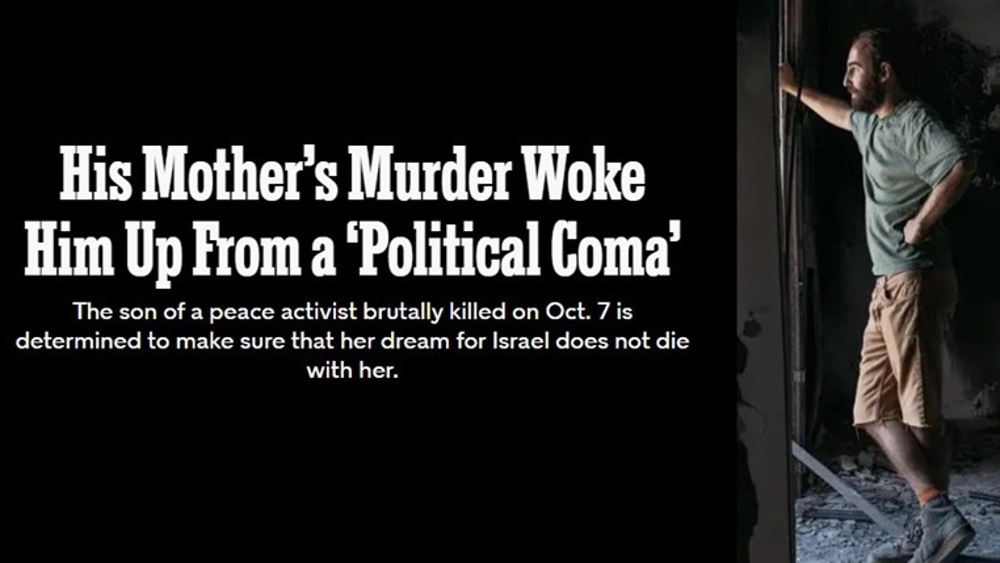
The detailed article presented her personal life and political activism. The author explored how her death profoundly impacted her son’s outlook, leading him to become more politically engaged in honor of his mother’s legacy.
“The stark contrast between the in-depth portrayals of Israeli hostages and victims, such as Vivian Silver, and the nameless, faceless treatment of Palestinian casualties reveals a troubling double standard in mainstream Western media,” Mirghara said.
A flawed reporting
The NYT’s fake report, “Screams Without Words,” was published in late December and relied heavily on trumped-up claims of rape and sexual violence perpetrated by Hamas during the October 7 operation into the Israel-occupied territories
Investigations by various independent media outlets, including October 7 Fact Check, Mondoweiss, Electronic Intifada, the Grayzone, and the Intercept revealed that the report was fraught with inconsistencies, unverified witness testimonies, and a lack of forensic evidence.
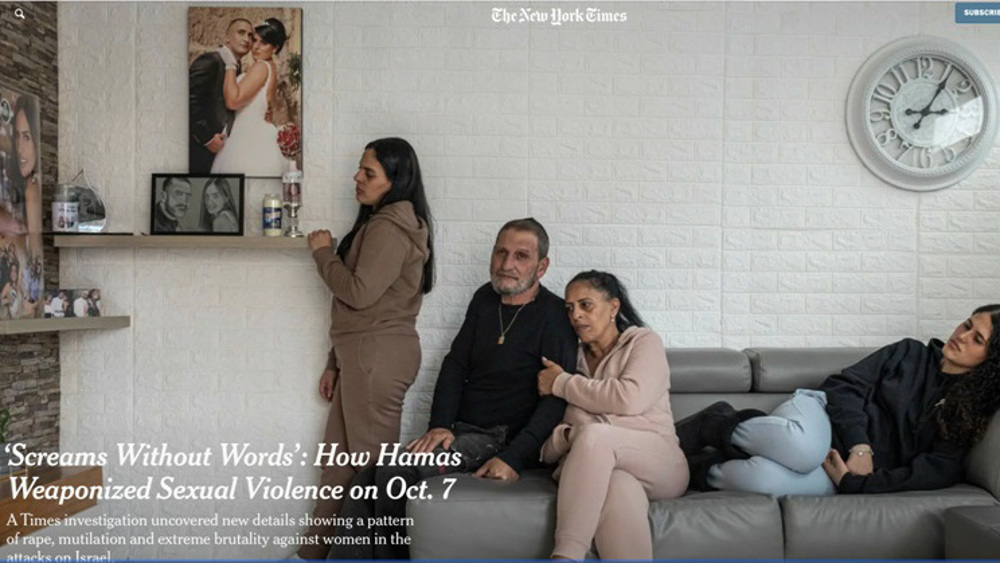
Among the many claims that were debunked in the aftermath of the incident, the most prominent was the story of Gal Abdush.
She was referred to in the NYT story as “the woman in the black dress,” and was portrayed as a victim of rape before she was killed on October 7.
However, her family members and friends strongly refuted this narrative, saying the story was “invented” and that they were unaware that the newspaper intended to use Abdush’s case to further a false rape narrative against the Palestinian resistance.
A spokesperson from Kibbutz Be’eri also rejected the claims made in the NYT article, stating that the alleged sexual assaults against female members during the Al-Aqsa Flood Operation were “not true.”
In Moein’s view, the discredited New York Times story serves as a potent example of the publication’s biased journalism, surpassing other instances in terms of its revealing nature.
“In a blatant attempt to divert attention from Israel’s crimes and deflect accountability, the NYT concocted a sensationalist and poorly evidenced story lying about Hamas weaponizing rape during the October 7 operation,” he told the Press TV website
He explained that the narrative was strategically timed to coincide with South Africa’s efforts to bring the Israeli regime before the International Court of Justice (ICJ) on charges of genocide.
“The fact that the Times staunchly defended its article, reveals its clear intention to propagate a pro-Israel, anti-Palestinian agenda,” Moein stressed.
“The NYT’s willingness to peddle falsehoods and fabrications to protect Israel’s interests exposes the biased and compromised nature of mainstream Western media."
‘A mockery of journalism’
The New York Times’ Pulitzer win in May for its coverage of the Gaza crisis was met with fierce criticism from pro-Palestine activists, who argued that the award was a mockery of journalistic integrity.
“By awarding the Times for biased and distorted reporting, the Pulitzer committee has effectively endorsed a narrative that whitewashes Israeli aggression,” said Moein.
According to Mirghara, the decision not only undermined the credibility of the Pulitzer Prize but also highlighted the pervasive influence of pro-Israel sentiment in Western media.
“The Pulitzer committee has sent a clear message by awarding the Times for its biased coverage: the suffering and perspectives of Palestinians are deemed less valuable and less worthy of recognition,” she concluded.
Iran set to simultaneously launch 3 satellites into space this week: Report
Israeli drone strike kills three in southern Lebanon amid truce violations
China slams US for ‘arbitrarily seizing’ ships, extends support to Venezuela
VIDEO | Press TV's news headlines
Over 100 Palestinians displaced as Israel razes residential building in occupied East al-Quds
Iran secures Zurkhaneh World Cup title in India
VIDEO | Karachi observes Yalda Night with tribute to Palestine, Lebanon resistance
New Israeli restrictions threaten lifesaving care in Gaza, MSF warns


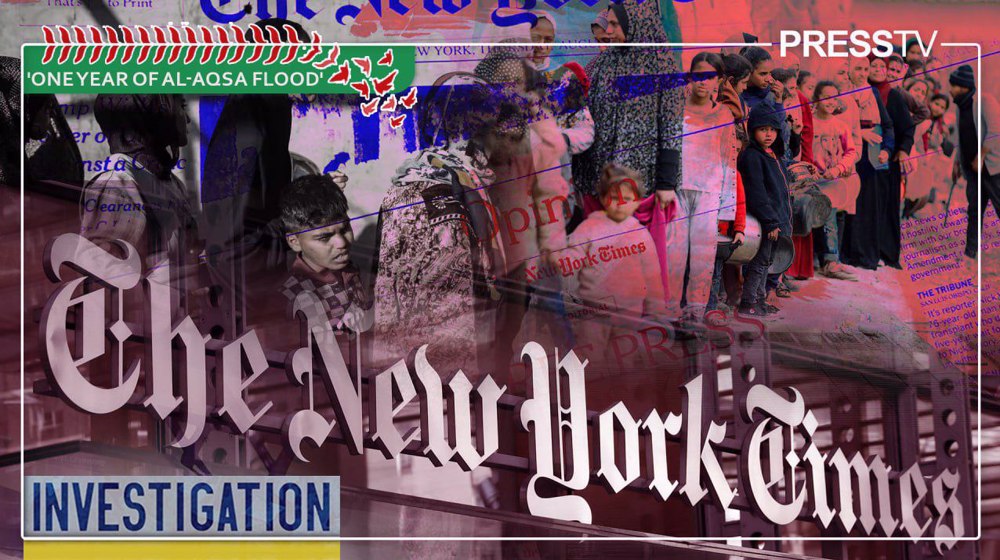
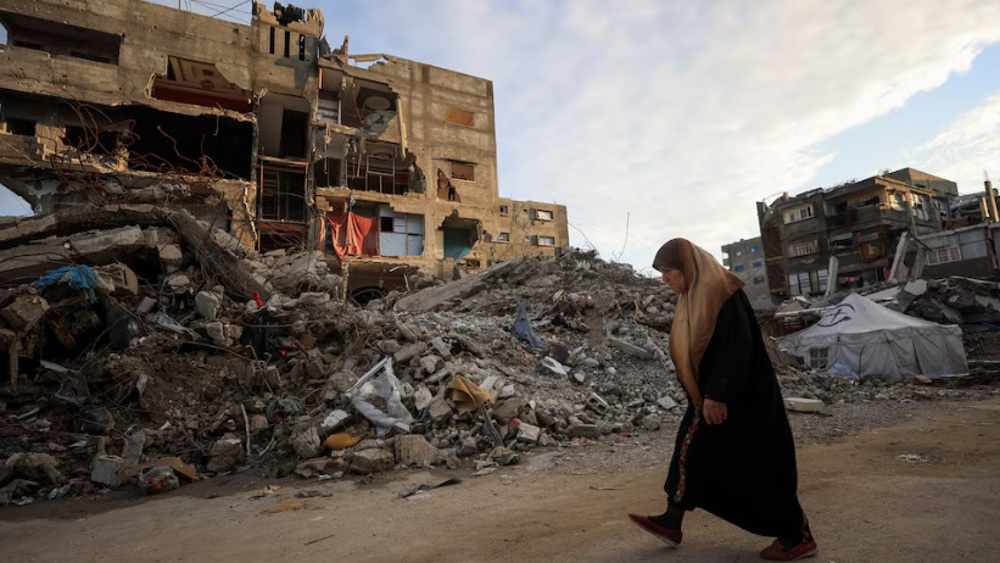

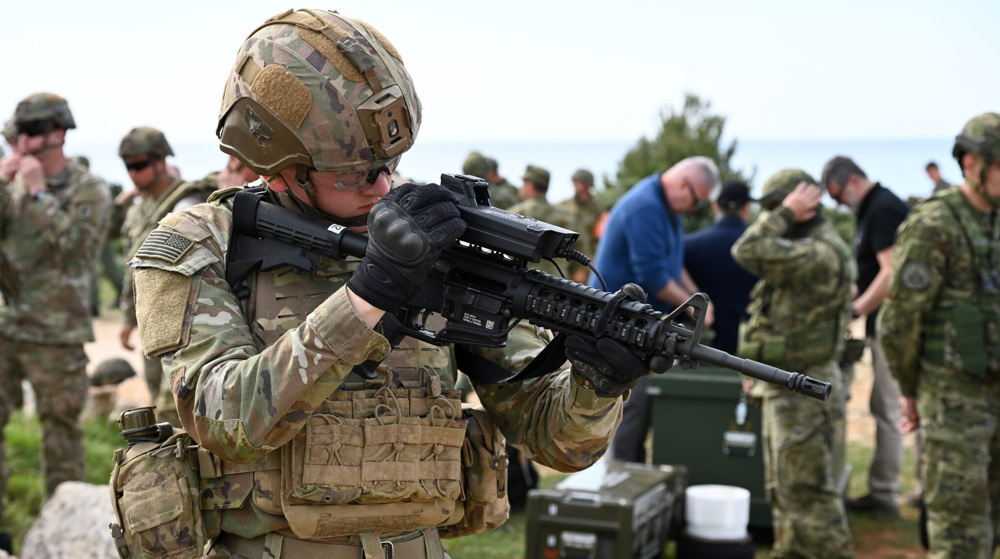



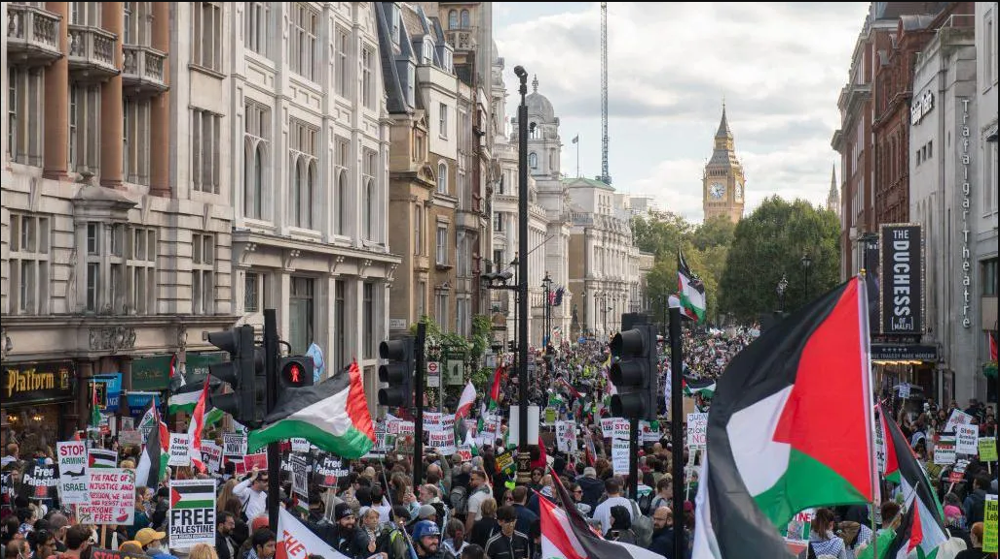

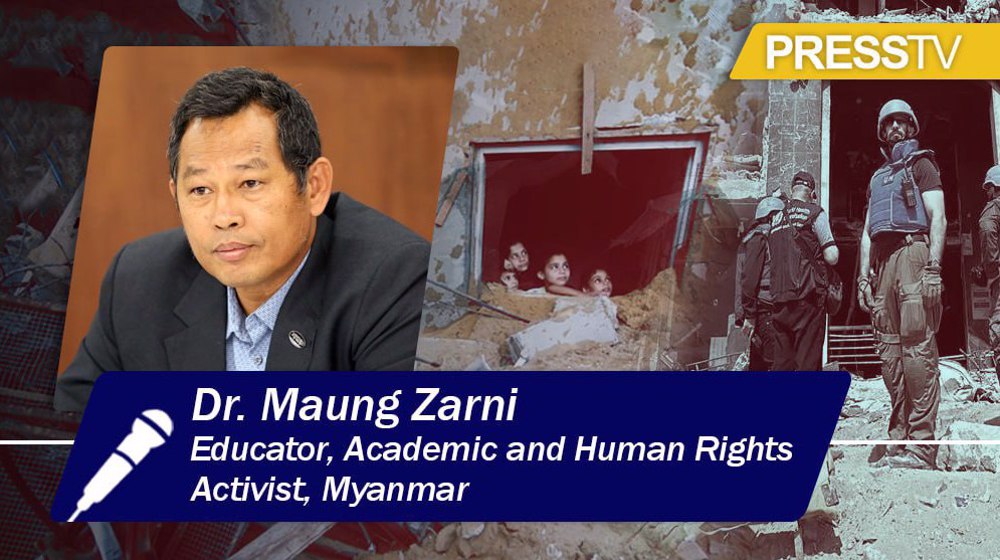
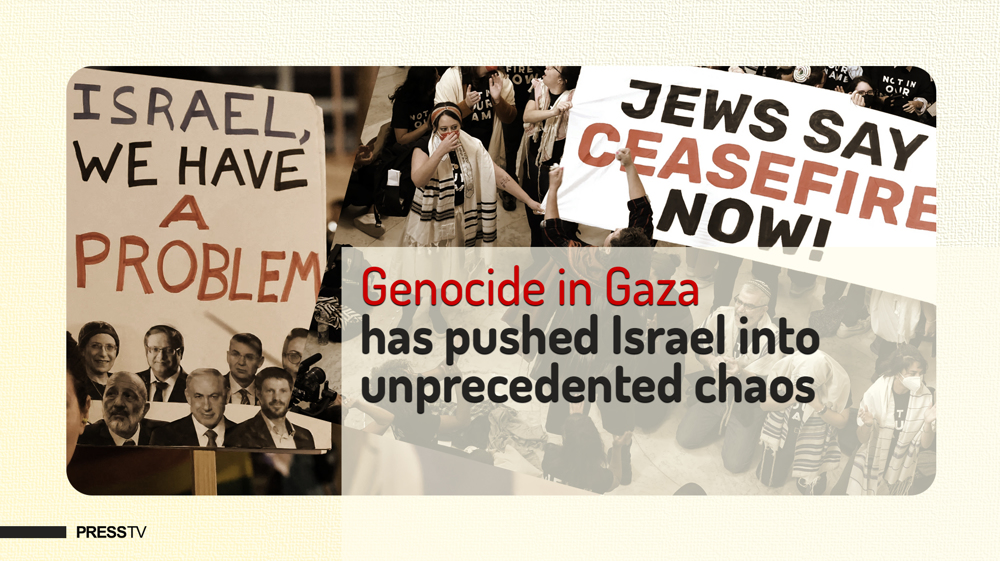
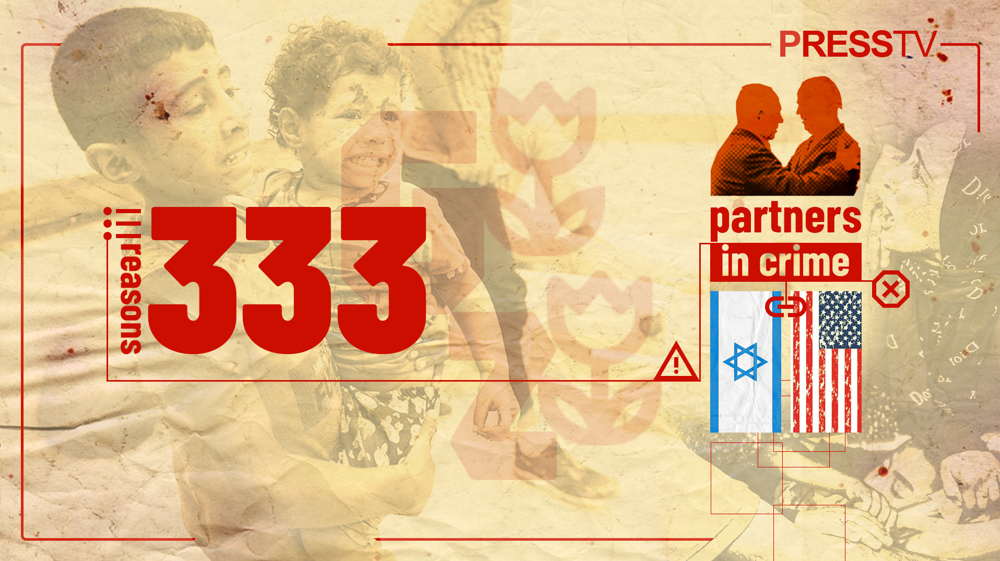

 This makes it easy to access the Press TV website
This makes it easy to access the Press TV website